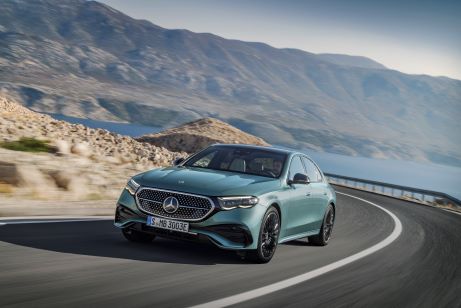
360° environmental check for the new E-Class
London, 30 January 2024, (Oilandgaspress): –To show the influence of using renewable energy to charge this plug-in hybrid, Mercedes-Benz compares two possible scenarios[2]: the driver uses electricity either from renewable sources or from the conventional EU electricity mix. In the first scenario, the CO₂ emissions over the entire lifecycle of the E 300 e are almost half of those in the second scenario. Both calculations are based on a total distance driven of 250,000 kilometres.
Since the market launch of the new E-Class, Mercedes-Benz has been offering no fewer than three fourth-generation plug-in hybrid models. With an increase in the electric range of the E 300 e to as much as 118 kilometres (WLTP)[3], drivers can cover the majority of everyday trips without using the internal combustion engine. Based on route-guidance information from the navigation system, the intelligent operating strategy schedules the electric-drive mode for those sections of the route that make most sense. For instance, in the hybrid drive programme, the system prioritises electric drive for sections through urban areas.

The operating strategy considers factors such as navigation data, topography, speed limits and traffic conditions along the entirety of the planned route.All the drivetrains in the new E-Class are electrified, either as mild hybrids with 48-volt technology and integrated starter-generator or as plug-in hybrids. And, since 2022, Mercedes-Benz has been offering fully electric vehicles in all segments in which the brand is active.175 components of the new E-Class with a total weight of 99 kilograms can be manufactured in part from resource-conserving materials (recycled polymers and renewable raw materials). One example of a sustainable material is MICROCUT microfibre. It consists of 45 percent recycled material and is used for a variety of interior cladding components. For the first time, the foam in the seats is made from recycled materials certified using the “mass balance approach”. The properties of these materials are identical to those derived from crude oil. This can reduce the need for fossil resources while maintaining the same product quality..
Information Source: Read More “
Energy Monitors , Electric Power , Natural Gas , Oil , Climate , Renewable , Wind , Transition , LPG , Solar , Electric , Biomass , Sustainability , Oil Price , Electric Vehicles,


